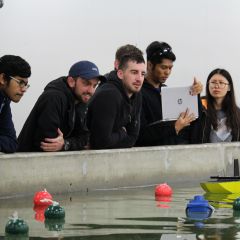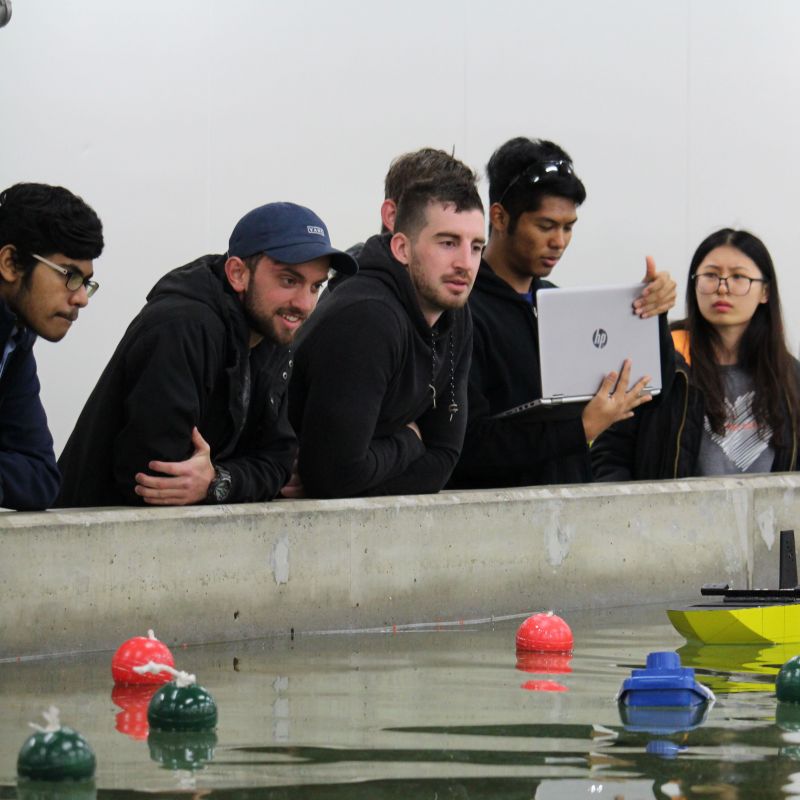Budding engineers have put classroom theory to the test as part of a hands-on challenge to design, build and program a robotic boat.
About 60 first-year maritime engineering students spent the past semester in teams working on designing and building a model boat, with set design rules and a strict budget, which must be programmed to manoeuvre itself through a marked channel in AMC’s model test basin.
The boats have cameras and acoustic sensors attached for guidance.
The students’ work is assessed against two key criteria: design and programming. As part of the design component, they must design and build the boat to house the sensors, electronics, motors and a payload (can of soft drink). For the programming component, the students must program the sensors and electronics to power and manoeuvre the boat.
The challenge is a joint project for two first-year engineering subjects: Design and Communication and Programming and Problem Solving.
AMC lecturer Thomas Mitchell Ferguson said the challenge provided an opportunity to develop the students’ computer design and programming skills, as well as honing their practical skills during the hands-on building and testing phase.
This project introduces first-year students to real-life engineering challenges in an area related to cutting-edge maritime technology into autonomous vessels.
“It allows them to build not only their technical knowledge and skills, but also their ability to communicate and collaborate as part of a team working towards a common goal," he said.
“As part of the project, the students get to use the AMC build studio where they have access to all the tools and equipment that they need to design and build the vessels. When we come to testing, we test in the model test basin, which is one of the best facilities in Australia for testing these types of objects.”
Callum Thompson-Young said he enjoyed the challenge because it was all about problem solving.
“We got to design and then test, then see the problems, redesign, build and test again,” he said.
“At the start, we got our whole team together to decide who works best in what areas. So we had a couple of our members working on the report and research side, where another member would do the designing of the boat and the building, and another member would work on the programming side of it.
"We’d all help each other and come back and put it all together so it created one finished project.”
Published on: 04 Jun 2018

